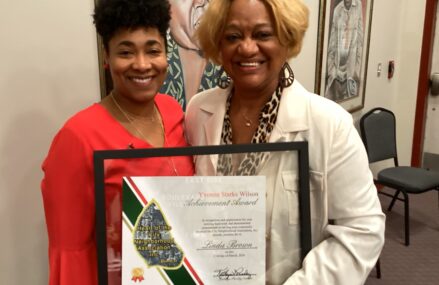
By JASON DEAREN
In a handout photo provided by the Bay Area Toll Authority, LED lights illuminate the San Francisco-Oakland Bay Bridge’s self-anchored suspension on Thursday, Aug. 29, 2013, in San Francisco. With traffic between Oakland and San Francisco halted over Labor Day weekend for construction, bridge officials say the new span will open by Tuesday morning. (AP Photo/Noah Berger)
SAN FRANCISCO (AP) — Crews are on pace to put the finishing touches on a new stretch of the San Francisco-Oakland Bay Bridge, and the span should be ready to open as planned early this week, officials say.
When traffic flows across the new eastern part of the span for the first time, it will do so nearly a quarter-century after a deadly earthquake during the 1989 World Series collapsed two 50-foot sections of the old structure.
The 6.9-magnitude Loma Prieta quake hit just as millions tuned in to watch Game 3 of the “Bay Bridge World Series” between the Oakland Athletics and San Francisco Giants, killing 63 people and causing up to $10 billion in damage.
The Bay Bridge failure, one of the temblor’s most memorable images, prompted one of the costliest public works projects in state history. The $6.4 billion project finally draws to a close after decades of political bickering, engineering challenges and billions in cost overruns. Transportation officials say the bridge should be ready to open as scheduled by 5 a.m. Tuesday after being closed for five days.
The years of past delays magnified public safety concerns over the need for a permanent solution as the original, seismically unsafe bridge was patched up and continued operating.
Highlighting the decades of complications, the scheduled opening of the reworked bridge was in jeopardy again this year after crews discovered dozens of defective rods used to anchor the roadway to important earthquake safety structures. The bridge will open with a temporary fix for these broken rods while the permanent repair, expected to be completed in December, is being installed.
Issues with the rods and myriad delays have left many commuters with a feeling of trepidation about the bridge, even though state officials say it’s one of the safest in the world.
The self-anchored suspension bridge with a looming, single white tower was designed to endure 150 years and withstand the strongest earthquake estimated by seismologists to occur at the site over a 1,500-year period.
Steve Heminger, chairman of the Toll Bridge Program Oversight Committee, the project’s watchdog, said the span is orders of magnitude safer than the current crossing.
“Some bridges in California have been built not to collapse in an earthquake, but they may be out of service,” Heminger said. “We couldn’t have that with the Bay Bridge, which is not only pivotal to the economy but also plays a critical role in helping us recover.”
“I’m not here to suggest that there weren’t construction challenges along the way, but they have been dealt with.”
In the decades since the earthquake, the bridge replacement project overcame many hurdles.
An initial scientific recommendation following Loma Prieta called for retrofitting the current span, not replacing it. A National Science Foundation team that studied damage to the bridge said in 1992 that the current eastern portion should be retrofitted for an estimated cost of $230 million.
But in 1996, the California Department of Transportation’s Seismic Advisory Board disagreed with those findings, saying the cost of replacing the old bridge would be comparable with retrofitting it.
At that time, Caltrans proposed building a simple concrete causeway — an elevated freeway — at a cost comparable to a retrofit.
But Bay Area leaders blasted that design as too vanilla, saying the area deserved a span that would complement the grandeur of the Golden Gate.
The self-anchored, single tower design was accepted in 1998, and Caltrans estimated it would cost $1.5 billion.
However, the ambition of the project created technical challenges that were not factored into original cost estimates — hurdles that delayed construction by years. During the delays the price of steel increased, and unforeseen engineering challenges created a need for more workers.
Costs skyrocketed, leading former Gov. Arnold Schwarzenegger in 2004 to propose scrapping the single-tower design in favor of the cheaper raised freeway concept. But the foundations of the bridge’s soaring tower were already laid, so in 2005 the project continued.
Critics of the bridge’s design along the way have questioned assertions that the span is quake safe, saying more work is needed to know if there are more defective bolts or rods, Bob Bea, an emeritus engineering professor at the University of California, Berkeley, said in an email.
“I do not think there are significant concerns for the ‘safety’ of the bridge under normal daily loadings. However, I do think there are remaining significant unresolved concerns for the ‘durability’ … and ‘safety’ of the bridge,” Bea said.
The project’s problems also exposed a government public works system that is no longer equipped to handle such ambitious projects, said Richard Walker, an emeritus geography professor at the UC Berkeley who has studied a century of public works projects in the U.S.
“America doesn’t do big infrastructure projects that well anymore,” Walker said. “California used to be at the leading edge … they built the Bay and Golden Gate Bridge, still one of the beloved structures in the world.
“In those days, there were far fewer regulations, which allowed builders to put together local steel and cement plants for these projects … assembling a whole team was easier.”
Bridge officials say the public will come around to the new bridge. It is wider, with five roomy lanes on each section. The new span was also built with roadway shoulders — room for stalled vehicles that will help improve traffic flow.
Over time, as concerns are addressed and the old bridge fades into history, some believe the project’s many black eyes will be forgotten.
“I don’t think the bridge will ‘wow’ people right way because of all these black eyes,” Walker said. “But after 10 years it will be seen as a nice piece of engineering and they’ll be proud of it later on.”
___


